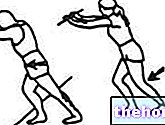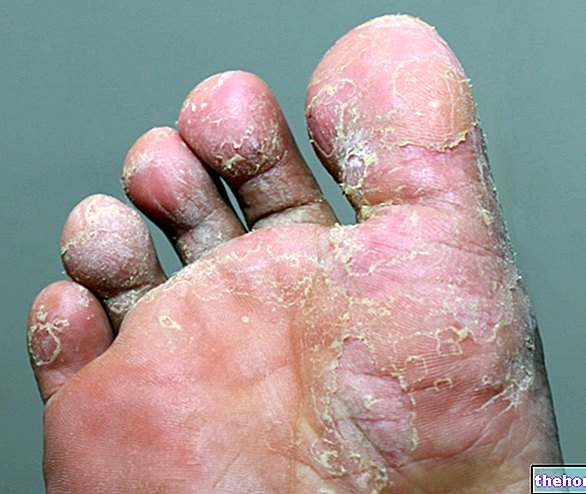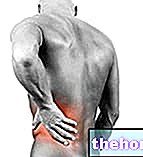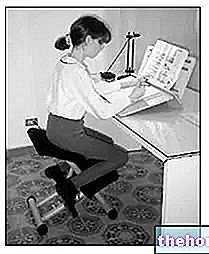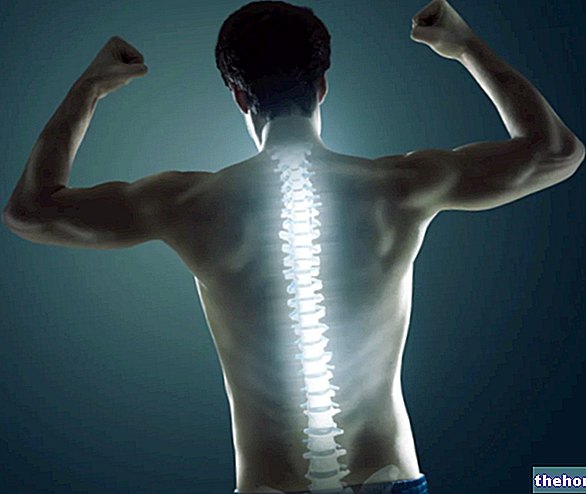Edited by Doctor Alessio Capobianco
Test for instability
-
Apprehension test: the patient is seated with the shoulder abducted by 90 ° and the elbow flexed, the examiner, placed behind, slowly performs an external rotation and at the same time exerts a slight forward thrust of the humeral head with the other hand; this maneuver determines, as the name of the test suggests, apprehension in the patient with anterior shoulder instability, which will highlight the "alarm" situation both with the "expression of the face and in words (the subject reports that the shoulder" is about to come out " ).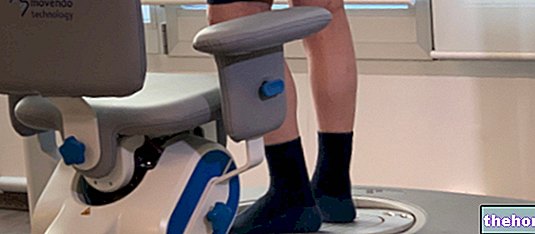
- Fulcrum test: the patient is in supine decubitus with the limb abducted and externally rotated by 90 °; the examiner places a fist under the proximal humerus to act as a "fulcrum" while with the other hand he pushes the elbow downwards; this maneuver, causing an anterior translation of the humeral head on the glenoid, causes an alarm reaction in the patient, similar to that of the previous apprehension test.
- Relocation test: if the tests described are positive, the maneuver is repeated, with the patient supine, using the edge of the table as a fulcrum but exerting a reverse pressure, ie forward-backward, on the humeral head; in this position the patient's apprehension decreases and there is the possibility of a greater external rotation which indicates the positivity of the test.
- Load and Shift test (or drawer test): is a test to be performed both seated, with the arm in a neutral position, and supine, with the limb in this case at 20 ° of abduction and anterior flexion; before carrying out the evaluation it is advisable to make sure that the humeral head is well centered on the glena, which may not occur in patients with multidirectional instability or with scars from previous surgical interventions; once the neutral position of the humeral head in the glena is ascertained, it is grasped and through a push of the thumb and index, movements of front and rear translation.
The quantification of humeral translation uses a gradation scale recommended by the Society of American Shoulder and Elbow Surgeon :
Grade 0: no translation;
Grade 1: moderate translation (0-1 cm)
Grade 2: slight translation towards the glenoid border (1-2 cm);
Grade 3: severe translation beyond the glenoid border (2-3 cm).
To correctly use the results obtained from specific functional tests, it is necessary to know the real value that the tests themselves have in identifying the pathology. To this end it is important to clarify some fundamental principles to be applied to clinical-functional tests.
Sensitivity is the ability of a test to identify those affected by the disease; a "high sensitivity, measured in%, means that there is a" high probability that the sick subject will test positive, that is, that the test has a few false negatives, but does not give any indication on false positives, that is, on how many healthy subjects they will be positive in the test. This last information is given by specificity, which is the ability to identify healthy subjects; a "high specificity of a test indicates a" high probability that a healthy subject will test negative, so the test is burdened with a few false positives but says nothing about the negative ones, ie how many patients will be negative on the test.
So, if a high sensitivity test were positive, we would have little information about the disease because it could be a false positive; however, if it were to be negative, we would have a near certainty that the patient is not affected by the pathology tested. The opposite would happen with a high specificity test which, if positive, would indicate with high probability the presence of disease, while its negativity could not exclude it with sufficient probability.
Notes on the functional examination of the sportsman
The peculiarities of a sports subject, be it professional or amateur, young or no longer young, require that the functional examination takes into account the influencing factors linked to the individuality of the athlete and the characteristics of the sporting activity. These factors can be divided into internal or intrinsic, as such little or nothing can be influenced, and external or extrinsic and, as such, modifiable at least in part; are examples of internal factors: age, sex, the type of gesture required, the limits imposed by the regulation, perceptual and motor qualities of the athlete; examples of external factors are: the role in sport, body and gestural symmetry, gestural automatism. In the functional examination, evaluation professionals must identify, acknowledge and make explicit the influence of intrinsic and extrinsic factors as well as the possibility of influencing them through specific interventions.
The topics just mentioned are fully part of the preventive interventions against shoulder disease, which will be taken up in a subsequent article.
Bibliography:
Notes and handouts in digital format of the lessons of "Sports traumatology", A.Caraffa, G.Mancini and coll. - course: Sports Sciences and Techniques 2004/05.
Bigliani L., Codd T., Condor P.M.-"Shoulder motion and laxity in the professional baseball players"- Am. J.Sports Med, 1997
Colonna S., Magnani M.-"Isokinetic evaluation of the shoulder in athletes with impingement syndrome"- Ghedini, Milan 1992
Fusco A., Foglia A., Musarra F., Testa M .: "The shoulder in the sportsman"- Ed. Masson 2005
Hess S.A. "Functional stability of the glenohumeral joint"- Manual Therapy, 2000
Jobe F.W., Pink M., "Shoulder injuries in the athlete: the instability continuum and treatment"- J. Hand Therapy, 1991
Kapandji I.A .: "Joint physiology - I - vol. "- Ed. Marrapese 2000.
Neer C.S.- "The shoulder in sports" Orthop. Clin. 1997
Pirola V .: "Kinesiology of human movement " - Edi Ermes 1999
Porcellini G., Castagna A., Paladini P.-"The shoulder: pathology, surgical technique, rehabilitation"- Verduci Ed. Rome 2003
Tittel K. -"Functional anatomy of" man "- Edi Ermes 1991
From the thesis: "THE SHOULDER OF THE" ATHLETE OVERHEAD ": BIOMECHANICS, PREVENTION AND SPORT-SPECIFIC TRAINING." by ALESSIO CAPOBIANCO - Perugia: March 2007
Other articles on "Instability Test"
- Test for the long head of the biceps - Test for the glenoid labrum
- Functional evaluation in shoulder pathologies
- Conflict (or impigement) test
- Rotator cuff test


